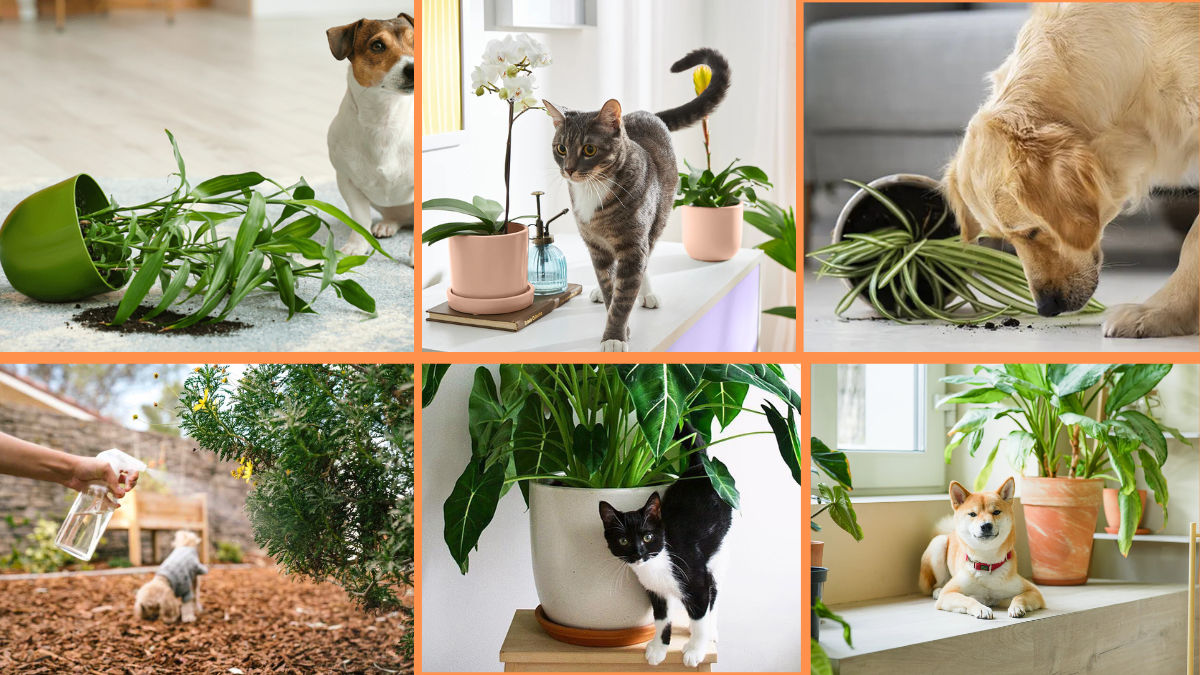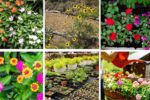Houseplants add life, beauty, and freshness to any space. But if you share your home with curious cats, playful dogs, or other pets, keeping your plants safe (and your pets safer) can be a bit of a challenge. Many pets love to chew leaves, dig soil, or even knock over pots — and unfortunately, some plants can be toxic to animals.
Don’t worry! With a little planning and creativity, it’s possible to create a peaceful indoor jungle without risking your pets’ health or your plants’ well-being. In this guide, we’ll share 10 essential tips to protect plants from pets — so you can enjoy the best of both worlds.
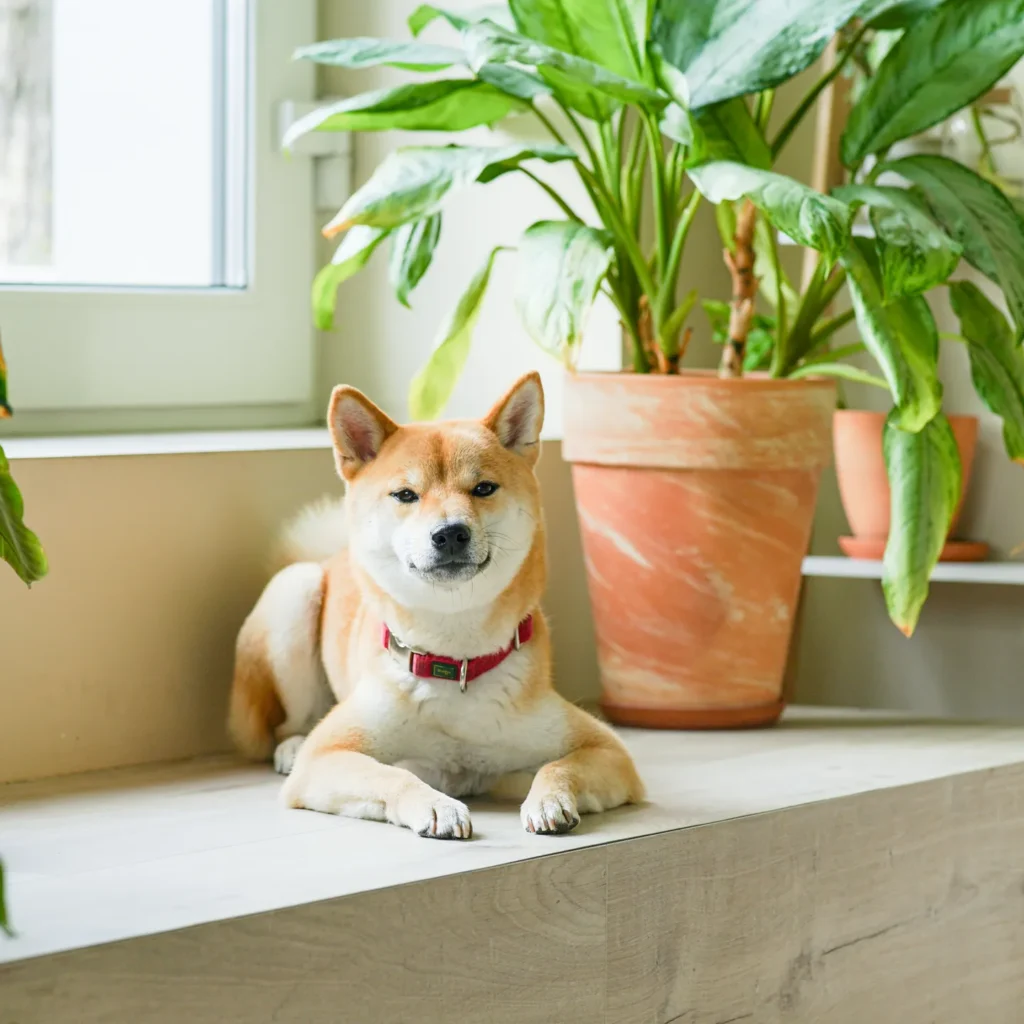
Why Pets and Plants Don’t Always Mix
Pets are naturally curious. The scent, texture, and movement of leaves often tempt cats and dogs to nibble, paw, or play with plants. Some of the risks involved include:
- Toxicity: Many common houseplants (like lilies, philodendrons, and pothos) can be harmful if ingested by pets.
- Choking hazards: Chewed leaves or stems can pose a choking risk.
- Mess and damage: Digging in plant pots or knocking over plants creates unwanted mess and can stress your plant collection.
Understanding these risks is the first step to creating a safer home environment for both your greenery and your pets.
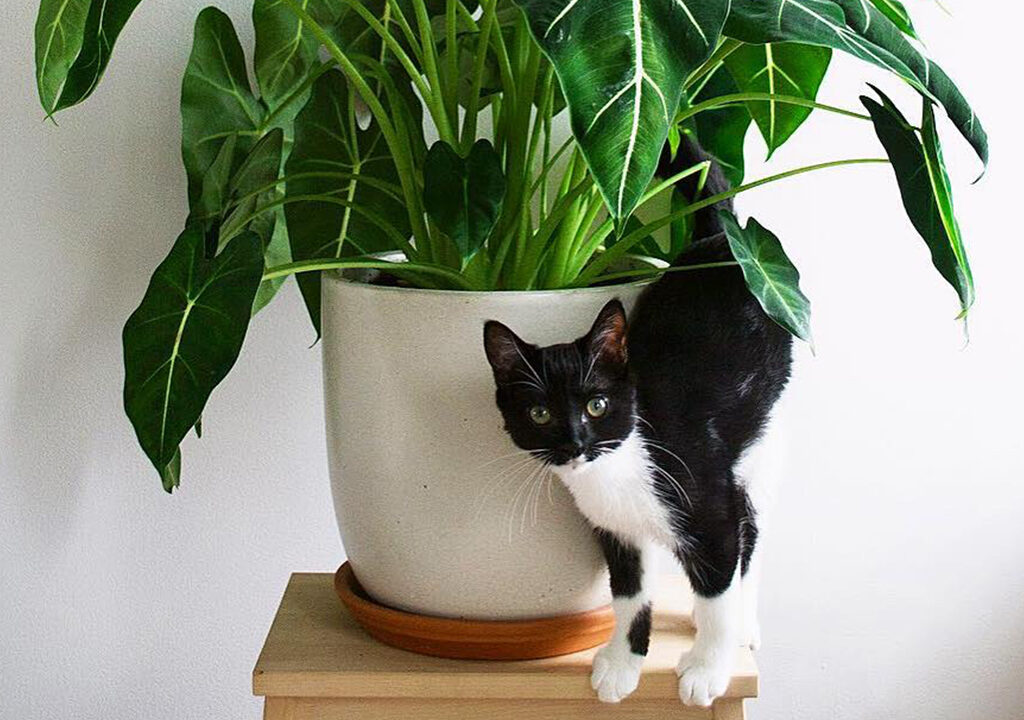
10 Tips to Protect Plants from Pets
1. Choose Pet-Friendly Plants
Prevention starts with smart plant selection. If you have a pet, opt for non-toxic, pet-safe plants to reduce the risk of accidental poisoning.
Pet-Friendly Plant Options:
- Spider Plant (Chlorophytum comosum)
- Areca Palm (Dypsis lutescens)
- Calathea
- Boston Fern (Nephrolepis exaltata)
- Prayer Plant (Maranta leuconeura)
- African Violet (Saintpaulia)
Avoid Toxic Plants Like:
- Lilies
- Pothos
- Dieffenbachia
- Aloe Vera
- Snake Plant
- Philodendron
Tip: Always double-check plant safety via reputable resources like the ASPCA’s online toxic plant list.
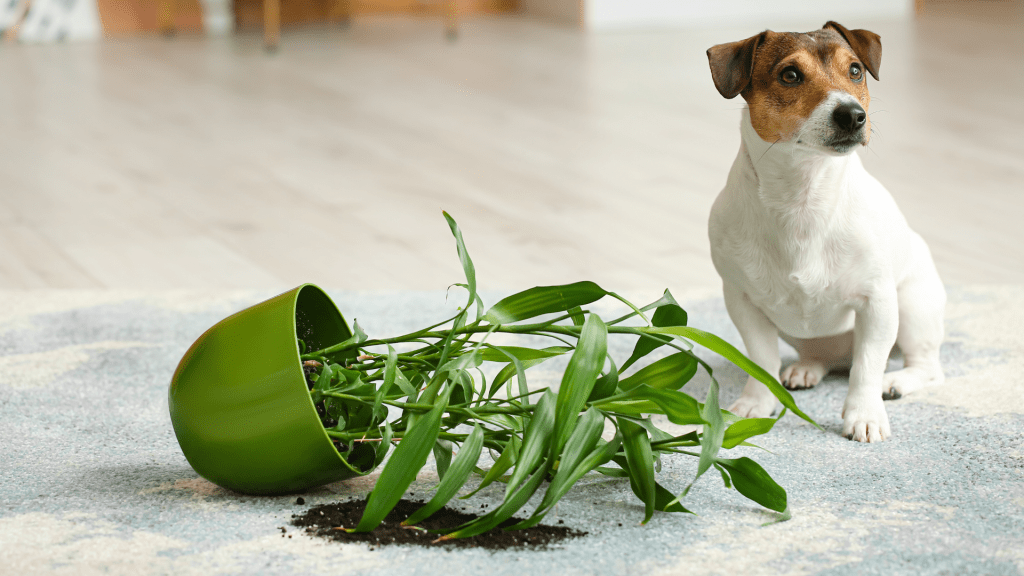
2. Keep Plants Out of Reach
One of the simplest ways to protect your plants is to place them out of reach of your pets.
Ideas for Elevated Displays:
- Hang plants from the ceiling in decorative macramé holders.
- Install wall-mounted shelves specifically for your plant collection.
- Use tall plant stands or cabinets.
This not only keeps plants safe but adds vertical interest to your room’s décor.
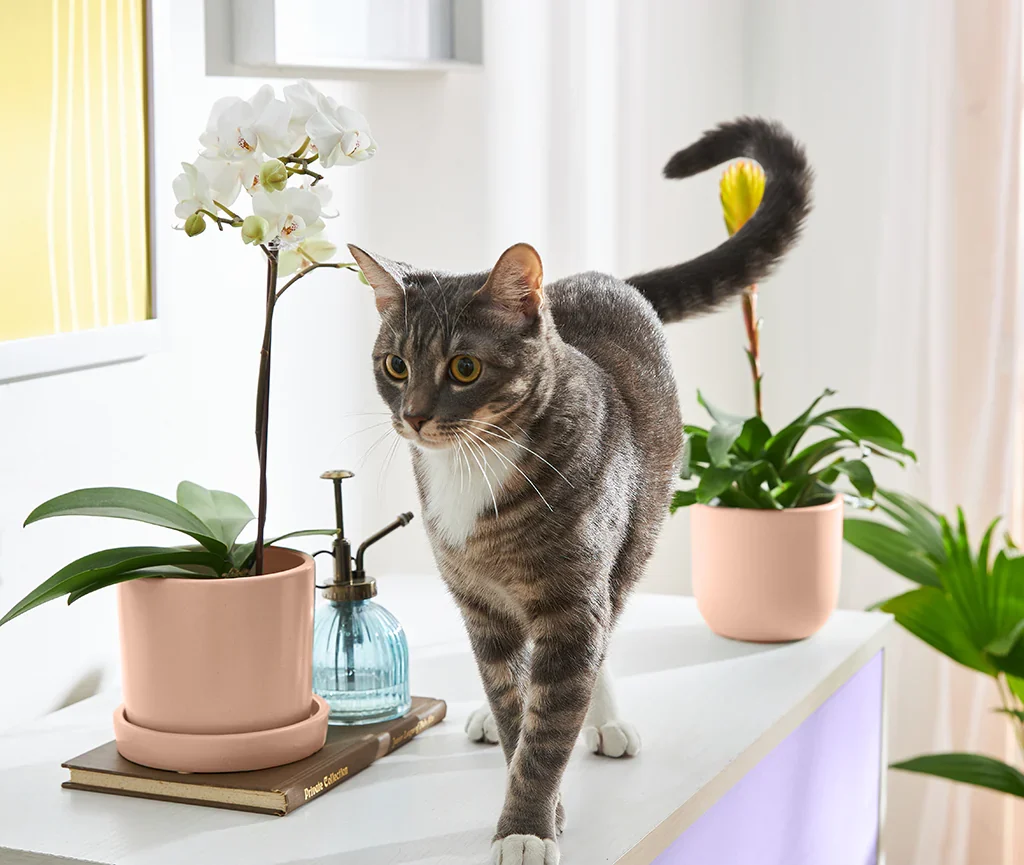
3. Use Pet Barriers and Baby Gates
For larger floor plants, consider using pet gates or barriers to create a no-access zone for your pets.
Effective Solutions:
- Use adjustable baby gates to block off rooms filled with plants.
- Set up decorative screens or fencing around floor-standing pots.
This works particularly well for active dogs or cats prone to digging.

4. Create a Dedicated Plant Zone
If you’re a plant lover with an extensive collection, think about dedicating an entire room or enclosed space to your plants.
Benefits of a Plant-Only Room:
- Provides plants with controlled light and humidity.
- Keeps curious pets at a safe distance.
- Allows for creative plant displays without restrictions.
A sunroom, enclosed porch, or spare room can easily become your own indoor garden sanctuary.
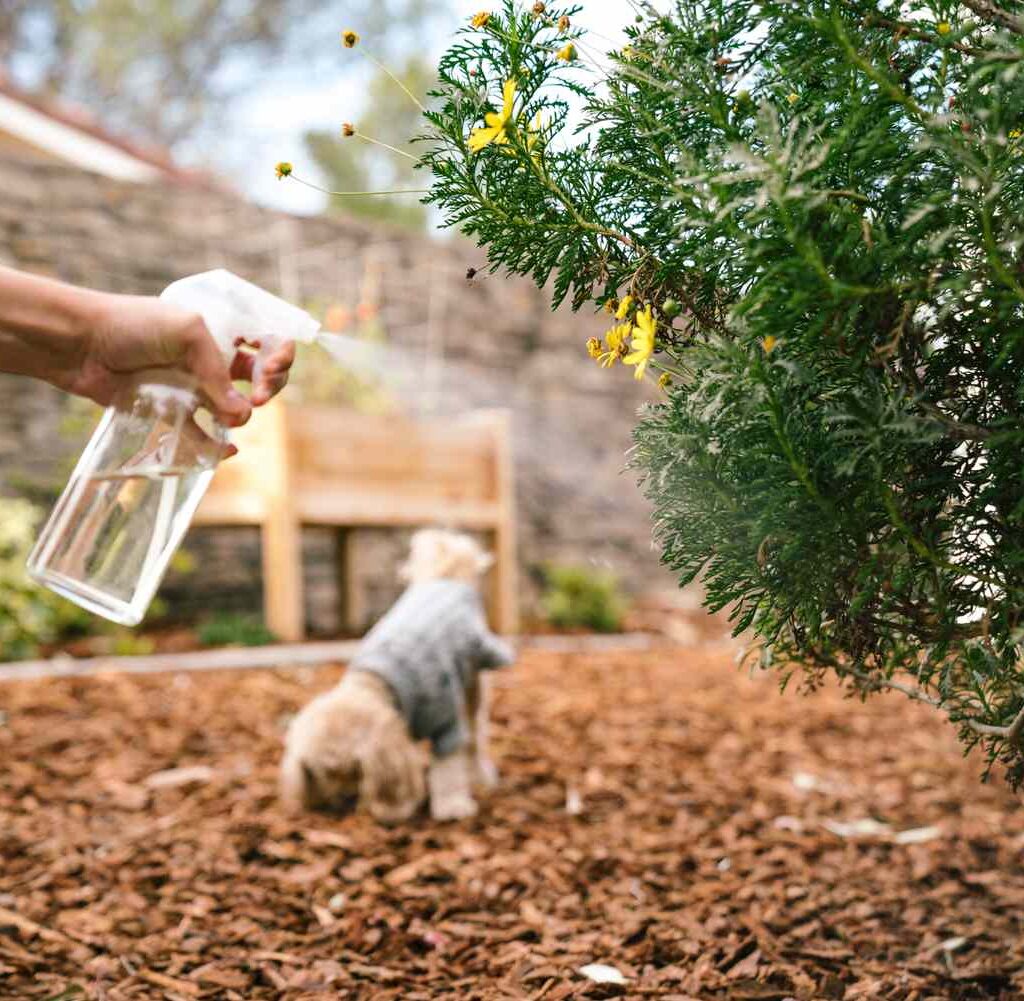
5. Make Plants Less Appealing to Pets
Many pets chew plants out of boredom or curiosity. Make your plants less attractive to them with natural deterrents.
Natural Repellents:
- Citrus peels: Most cats and dogs dislike the scent.
- Diluted vinegar spray (only on non-leaf areas).
- Pepper flakes sprinkled around the base of the soil.
Important: Never use chemical repellents, as they can harm both your pets and your plants.
6. Cover the Soil Surface
Some pets, especially cats, love to dig in plant pots. Protect your soil by covering it with pet-safe materials.
Soil Covering Ideas:
- Decorative stones or pebbles
- Pinecones
- Coconut coir or moss
These materials not only prevent digging but also help retain moisture in the soil.
7. Train Your Pets with Positive Reinforcement
Just like teaching a pet not to jump on furniture, you can train them to leave your plants alone.
Training Techniques:
- Use a firm “no” or clap your hands when you catch them in the act.
- Redirect them to a pet-safe toy or treat.
- Reward good behavior consistently.
Pro Tip: Consistency is key. Over time, most pets can learn to ignore your plants.
8. Provide Safe, Pet-Friendly Alternatives
Sometimes pets chew plants because they crave the texture or need roughage. Give them a safe alternative to satisfy their chewing urges.
Pet-Friendly Options:
- Cat grass (wheatgrass): Safe for cats and dogs and aids digestion.
- Pet chew toys: Designed to keep dogs occupied and away from your plants.
- Edible herbs: Like parsley or mint (in moderation) can be safe and enjoyable.
Having designated pet-friendly plants can help divert their attention from your decorative houseplants.
9. Use Heavy, Stable Pots
Protect both your plants and pets from accidents by using heavy, wide-based pots that are difficult to tip over.
Good Pot Choices:
- Concrete or ceramic pots
- Wide terracotta planters
- Decorative planters with weighted bottoms
Avoid lightweight plastic pots for floor plants in high-traffic areas.
10. Regularly Inspect and Maintain Plants
A healthy, well-maintained plant is less likely to drop leaves or flowers that can attract pets.
Maintenance Checklist:
- Prune dead or damaged leaves.
- Clean up fallen foliage promptly.
- Check for pests that may attract curious noses.
- Refresh deterrents like citrus peels or soil covers as needed.
Keeping your plant collection tidy not only helps deter pets but also promotes plant health.
Final Thoughts: Balance Is Possible!
Being a pet owner and a plant lover doesn’t have to be a conflict. By choosing pet-friendly plants, training your pets, and implementing these simple protective measures, you can create a harmonious home where plants thrive and pets stay safe.
Remember — understanding your pet’s natural behaviors is key. A combination of smart plant placement, natural deterrents, and positive reinforcement will help you maintain a beautiful, green home without sacrificing your pet’s well-being.
So go ahead — build your plant collection, and let your furry companions bask in the beauty of your home’s greenery, safely and happily.
